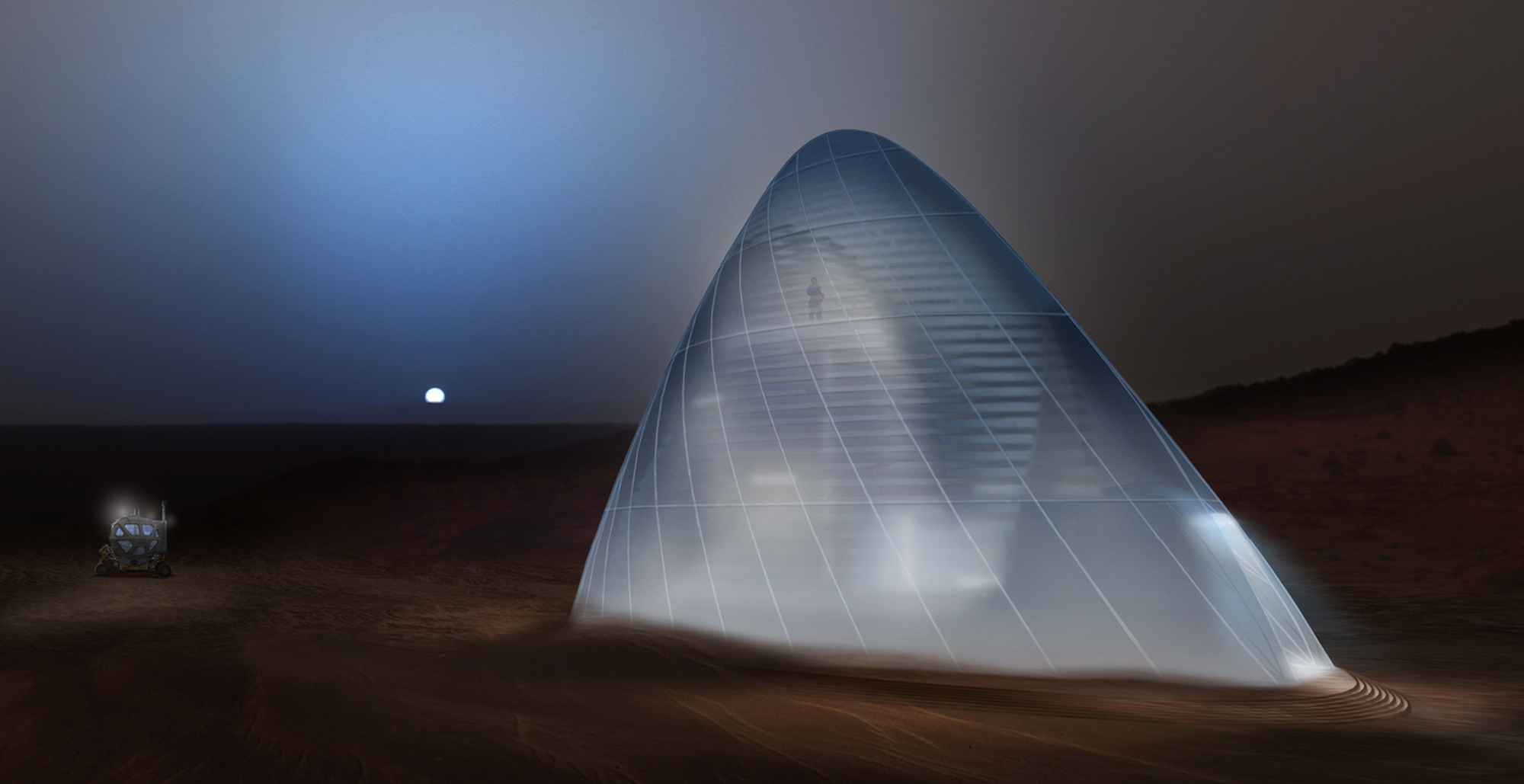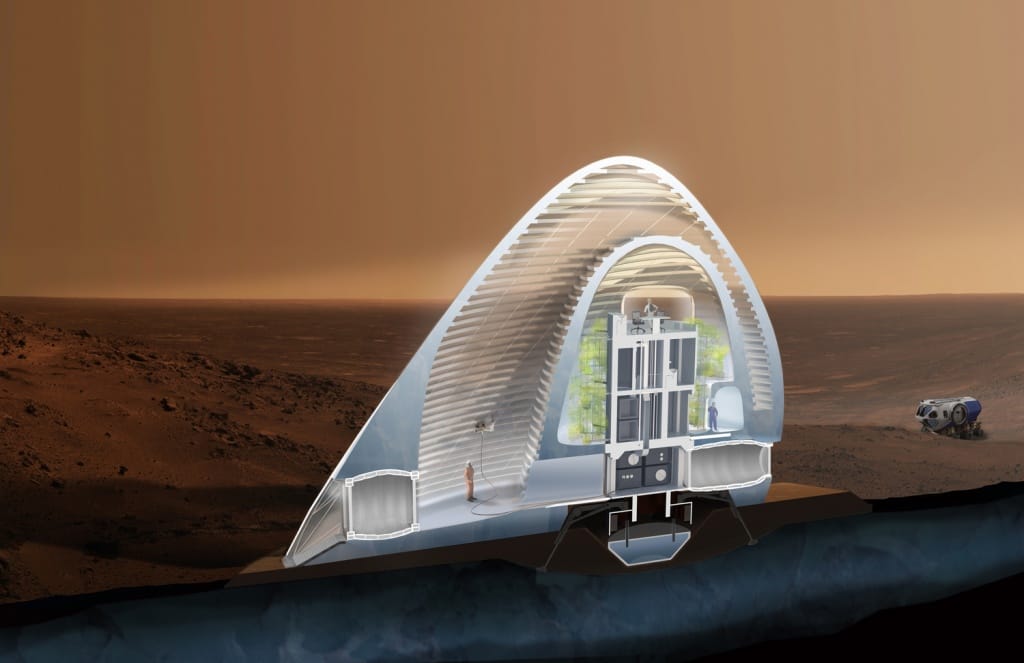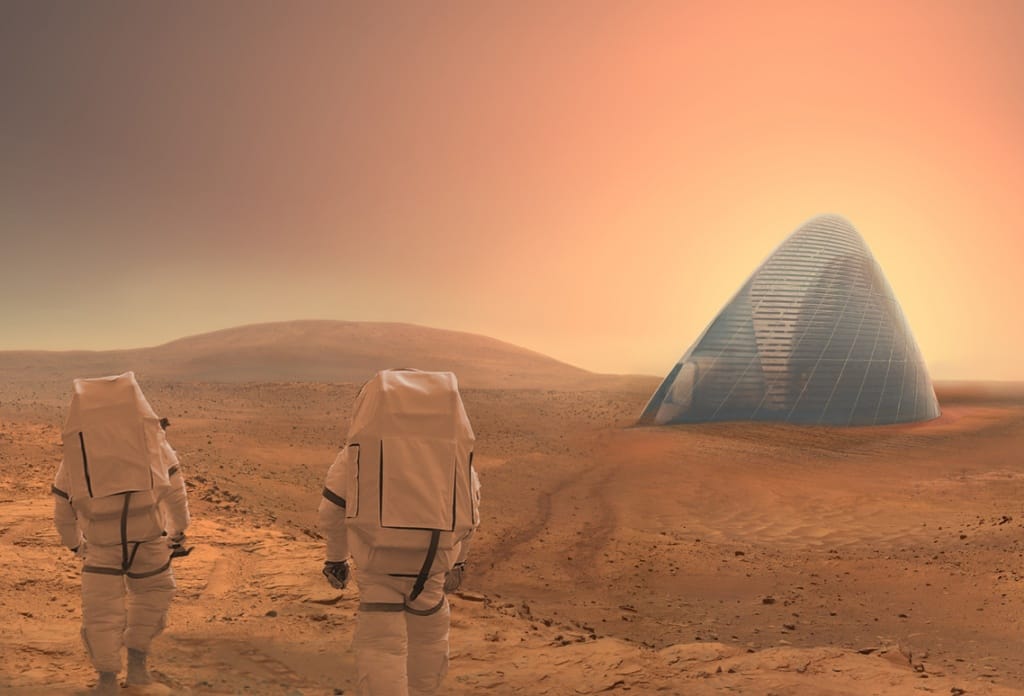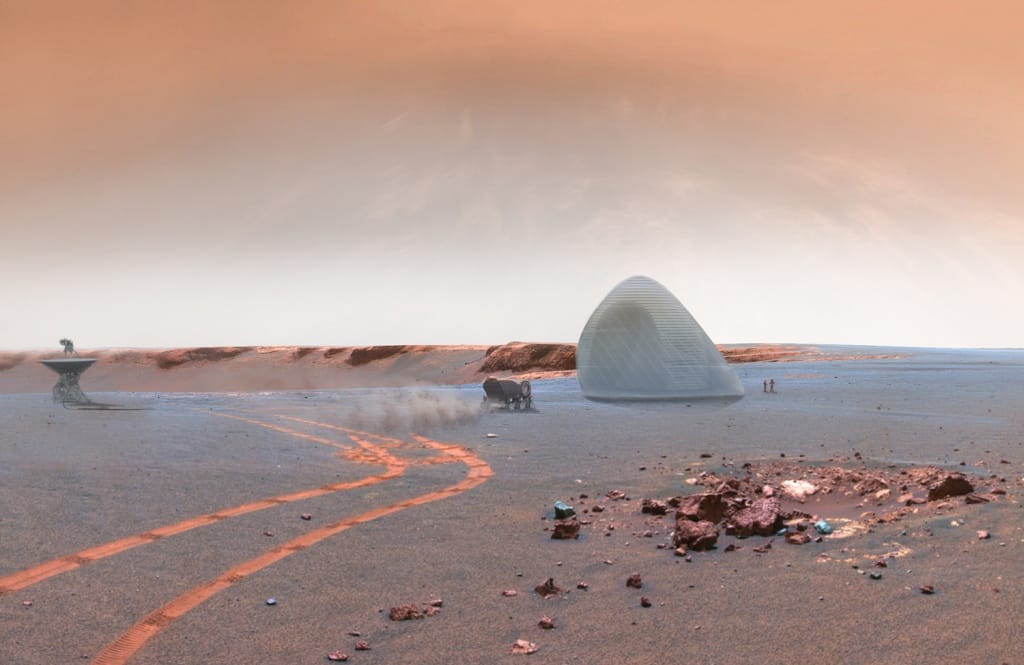This 3D-Printed Igloo Could Be the Best Mars Habitat Design Yet
The first human mission to Mars is, supposedly, closer than ever, with a one-way trip to the (watery!) Red Planet scheduled for 2024.

The first human mission to Mars is, supposedly, closer than ever, with a one-way trip to the (watery!) Red Planet scheduled for 2024. One little kink space explorers are still working out: how to create Mars habitats in which humans can live comfortably enough.
The Mars Ice House, which recently won NASA’s 3D Printed Habitat Challenge Design Competition at the New York Maker Faire, is perhaps the most promising new concept for such a habitat. Unlike the cramped little underground hovels that make up much imagined Mars architecture, the Mars Ice House is a light-filled, shell-shaped building meant to “celebrate the presence of a human habitat as a beacon of light on the Martian surface,” as designers Space Exploration Architecture and Clouds Architecture Office write on their website.

Its design makes use of the flowing water that was recently discovered on Mars’ surface. Essentially, it’s a giant 3D-printed igloo made from thylene tetrafuorethylene (ETFE, a high-tech plastic) and coated with a 5-cm-thick layer of ice. The ice acts as a protective layer, shielding inhabitants from radiation in Mars’ thin atmosphere. The Ice House is proposed to be located in the icy region of Alba Mons in Mars’ northern hemisphere.
“Recognizing that water is the building block to life, the team used a ‘follow the water’ approach to conceptualize, site and construct their design,” said SEArch and Clouds AO. “[Our] proposal stood out as one of the few entries not to bury the habitat beneath regolith,” which contains toxins harmful to humans, “instead mining the anticipated abundance of subsurface ice in the northern regions to create a thin vertical ice shell capable of protecting the interior habitat from radiation while celebrating life above ground.”
We look forward to seeing the Ice House on the Mars edition of Cribs.




The SEArch/Clouds AO team received a $40,000 prize for their winning proposal. See more on the Mars Ice House here.





